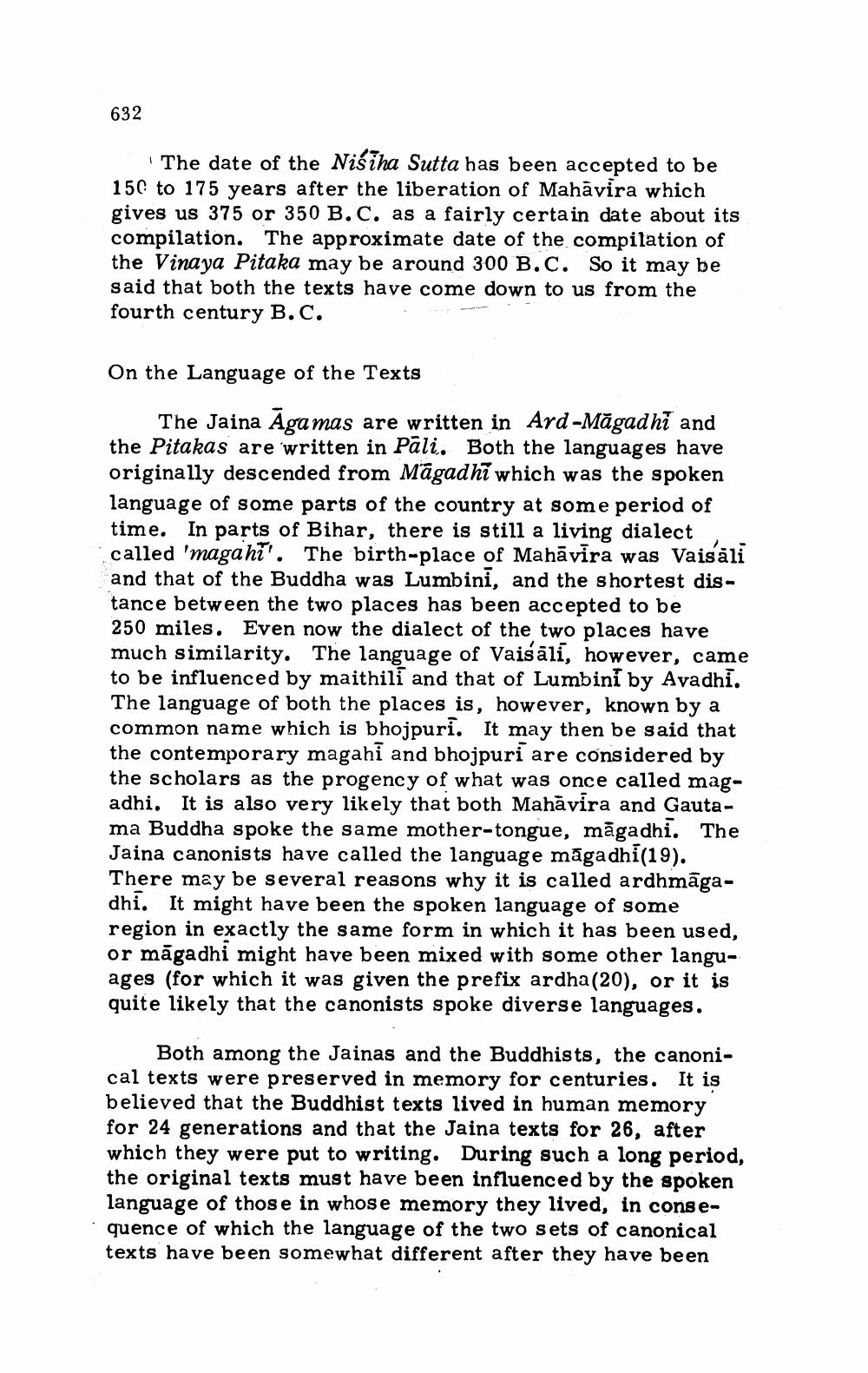________________
632
The date of the Niśiha Sutta has been accepted to be 15 to 175 years after the liberation of Mahavira which gives us 375 or 350 B.C. as a fairly certain date about its compilation. The approximate date of the compilation of the Vinaya Pitaka may be around 300 B.C. So it may be said that both the texts have come down to us from the fourth century B.C.
On the Language of the Texts
The Jaina Āgamas are written in Ard-Măgadhi and the Pitakas are written in Pali. Both the languages have originally descended from Māgadhi which was the spoken language of some parts of the country at some period of time. In parts of Bihar, there is still a living dialect called 'magahi'. The birth-place of Mahavira was Vaisali and that of the Buddha was Lumbini, and the shortest distance between the two places has been accepted to be 250 miles. Even now the dialect of the two places have much similarity. The language of Vaisāli, however, came to be influenced by maithili and that of Lumbini by Avadhi. The language of both the places is, however, known by a common name which is bhojpuri. It may then be said that the contemporary magahi and bhojpuri are considered by the scholars as the progency of what was once called magadhi. It is also very likely that both Mahavira and Gautama Buddha spoke the same mother-tongue, māgadhi. The Jaina canonists have called the language magadh There may be several reasons why it is called ardhmāgadhi. It might have been the spoken language of some region in exactly the same form in which it has been used, or māgadhi might have been mixed with some other languages (for which it was given the prefix ardha(20), or it is quite likely that the canonists spoke diverse languages.
Both among the Jainas and the Buddhists, the canonical texts were preserved in memory for centuries. It is believed that the Buddhist texts lived in human memory for 24 generations and that the Jaina texts for 26, after which they were put to writing. During such a long period, the original texts must have been influenced by the spoken language of those in whose memory they lived, in consequence of which the language of the two sets of canonical texts have been somewhat different after they have been




